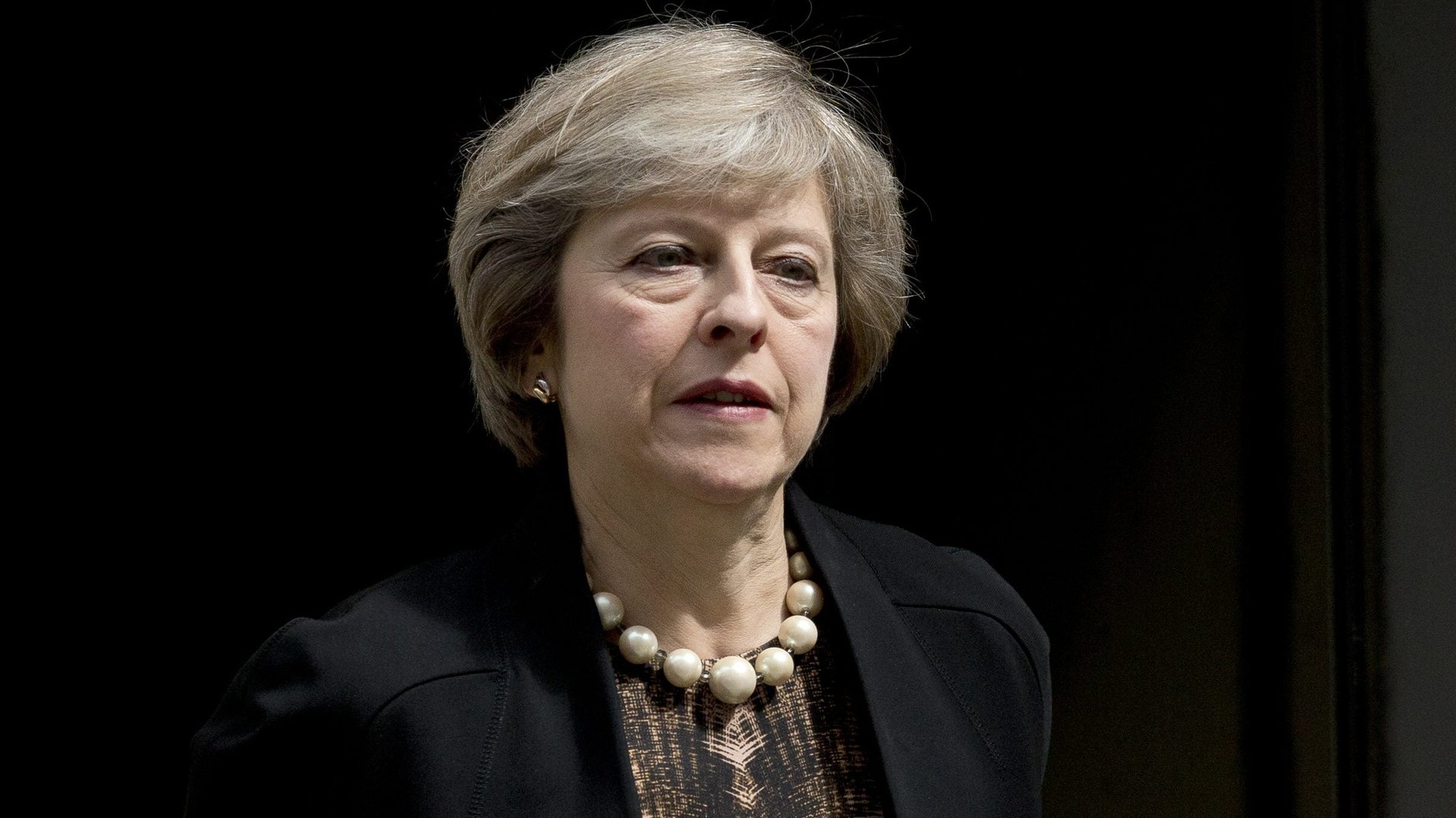Just 93 votes stopped Theresa May winning a majority in the British election
If you thought the roughly 80,000-vote margin of Donald Trump’s victory over Hillary Clinton in the 2016 US election was small, make sure you’re sitting down.


If you thought the roughly 80,000-vote margin of Donald Trump’s victory over Hillary Clinton in the 2016 US election was small, make sure you’re sitting down.
Having expected to romp to an overwhelming majority in last month’s election, beleaguered British prime minister Theresa May ended up losing 13 seats—and with them her party’s majority. She now faces the prospect of having her legislative agenda barely scrape through a vote on day one, as her party struggles to make a deal with Northern Ireland’s Democratic Unionist Party.
But just 93 votes across four parliamentary seats could have given her a working majority, and 794 votes would have made for an absolute majority. Here’s how the numbers work:
- You need 326 seats in Britain’s 650-seat parliament for an absolute majority.
- However, by tradition, Northern Irish republicans Sinn Fein don’t take their seats (out of protest against British rule). They won seven, which means the chamber de facto consists of 643 seats, of which 322 are needed for a working majority.
- The Conservatives won 318 seats, so they were eight short of 326 and four short of 322.
So, you need to look at the eight most closely contested seats to work out how many votes they missed out by. Here are those seats, all but one of which was lost to the leftist Labour party:
So, Theresa May was super unlucky?
Well, yes and no. That 322 figure cuts both ways. Although Labour fell well short of a majority with 264 seats, when you add the party’s tally to those of other progressives with which it could form a coalition, they also fall just short of a majority, at 314 seats.
In other words, with just eight seats more, Britain might now have a Labour-led government. The BBC added up the total margin in the Conservatives’ eight most narrowly held seats; to win those seats, Labour and its coalition allies would have needed only 2,800 more votes.
Just what kind of electoral system is this?
Good question. Britain’s first-past-the-post system ensures that the party which can command the most seats in Parliament is in power. Seats are elected based on geographical constituencies; the national vote total plays no part. So how many seats a party wins depends greatly on how the votes are distributed. The Liberal Democrats won 2.4 million votes in the election and got just 12 seats, while the Scottish National Party got fewer than 1 million votes and nearly 35 seats, because its voters are all in Scotland.
Similarly, despite only getting 42.4% of the vote share with 13.7 million, the Tories would have needed only needed a handful more ballots to get total control of the country—checked only by the unelected House of Lords.
Wait, Britain’s second chamber is unelected?
Just don’t go there, okay?